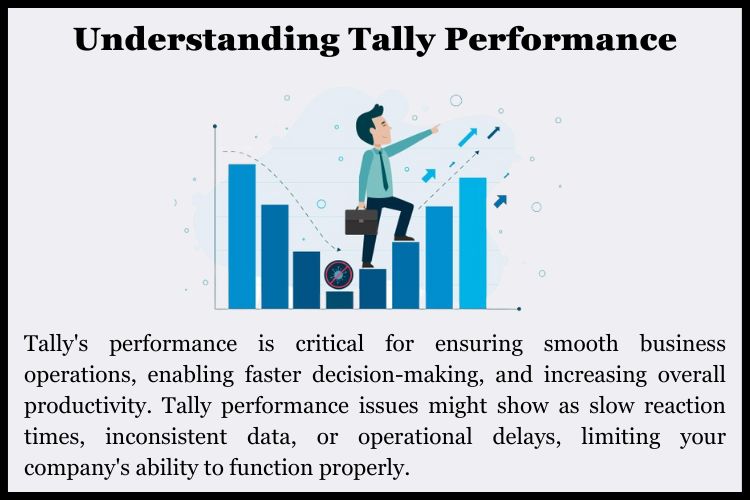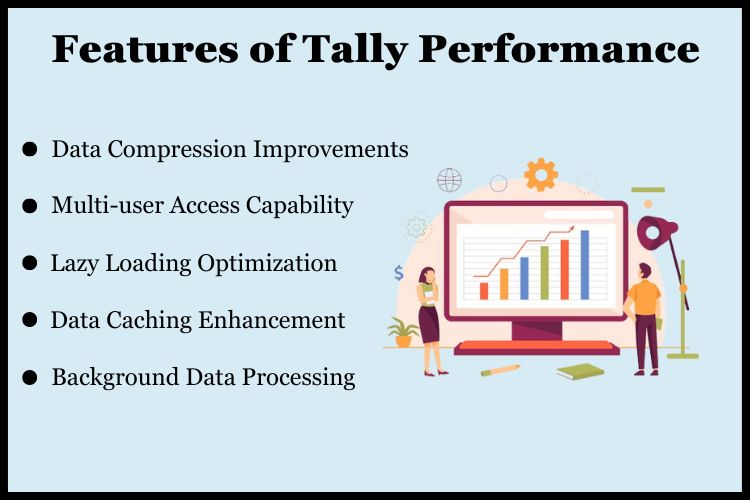
Affordable Strategy to Expand Your Tally Performance
Introduction
In today’s fast-paced business environment, effective financial management and resource planning are critical for any enterprise seeking development and sustainability. Tally ERP software has emerged as a critical tool for managing a wide range of business processes, including accounting, inventory management, and compliance. However, improving the efficiency of your Tally system is critical for gaining a competitive advantage and maintaining seamless, uninterrupted company activities. This blog explores affordable techniques for improving Tally performance, ensuring that businesses of all sizes may benefit from these insights for increased efficiency and production.

Understanding Tally Performance
Tally’s performance is critical for ensuring smooth business operations, enabling faster decision-making, and increasing overall productivity. Tally performance issues might show as slow reaction times, inconsistent data, or operational delays, limiting your company’s ability to function properly. Tally performance can be affected by a variety of factors, including hardware specs, network setup, data volume, and system design. Recognizing these characteristics is the first step in optimizing your Tally system for maximum effectiveness.
How to Boost Tally Performance
Improving your Tally performance doesn’t necessarily require significant financial investment. Here are several cost-effective strategies to enhance your system:
Download Free 90+ Tally Shortcut Keys
1. Enhance System Setup
Customize your Tally software settings to ensure seamlessly with the specific capacities of your hardware and the unique needs of your business operations. This should involve adjusting the memory usage and turning on various built-in functions that are designed to enhance the overall performance of Tally.
2. Maintain Data Hygiene Regularly
Create a consistent plan for reviewing and removing unnecessary information from your Tally system. By carefully archiving or removing outdated and non-essential data, you can significantly improve the software’s speed and responsiveness. Such regular maintenance ensures that your Tally environment is optimized and clutter-free.
3. Strategically Update Your Hardware
Choosing selective hardware changes, regardless of the potential expenditures, can result in significant functional improvements to your Tally program. Consider targeted changes such as increasing your system’s RAM or switching to faster solid-state disks (SSDs) to improve Tally’s operating efficiency.
4. Utilization of Tally Capabilities
Maximize the usability of Tally by utilizing its integrated capabilities, such as efficient data synchronization and remote access. These features are intended to speed up procedures and boost productivity without incurring additional expenses or resources.
5. Network Optimization for Enhanced Tally System Performance
To improve efficiency in Tally systems that operate in a networked environment, it is critical to have a solid and fast network connection. This step speeds up data interchange and improves system responsiveness, optimizing operational performance.
6. Regular Software Updates for Optimal Functionality
Tally constantly releases software upgrades aimed at improving the performance and security of its systems. Regularly upgrading your software ensures access to the most recent improvements and features, which improves your system’s performance and security position.
7. Investing in Professional Training for Effective Tally Usage
Allocating resources to provide your team with professional training on Tally can significantly enhance their performance. This educational investment minimizes operational obstacles and improves system performance, leading to a more efficient and effective utilization of the Tally system.
Features of Tally Performance
Understanding the features that influence Tally’s performance can help businesses better utilize the software for optimal results:
1. Data Caching Enhancement
Data caching significantly boosts the speed at which data is retrieved by strategically storing data that is accessed frequently in a rapidly accessible memory location. This method ensures that when data is requested, it is fetched with greater speed and efficiency, minimizing the wait time and enhancing the overall system performance.
2. Lazy Loading Optimization
Lazy loading is an effective method that reduces the time it takes for initial data components to load by loading just the elements that are required at the time. This strategy not only increases the application’s responsiveness but also saves bandwidth by minimizing the wasteful loading of useless data, hence improving the user’s experience.
3. Enhanced Background Data Processing
Background data processing enables Tally to do data manipulations and calculations in the background, considerably increasing the responsiveness of the user interface. This integrated processing ensures that the system remains responsive and efficient, allowing for a more uninterrupted user experience.
4. Data Compression Improvements
Data compression is the process of lowering the total size of data saved on disk, resulting in faster load times and cheaper storage space requirements. Compressing data allows the system to store more information in less space and retrieve it more quickly, enhancing efficiency and performance.

5. Concurrent Multi-user Access Capability
Concurrent multi-user access allows numerous users to engage with the system simultaneously without creating noticeable performance decreases. This feature ensures that the system can efficiently handle multiple users while maintaining high levels of performance and reliability, which is critical in collaborative and team-oriented environments.
Conclusion
Improving your Tally performance is a strategic investment that may lead to significant long-term benefits, including higher efficiency, lower operational costs, and better decision-making skills. Businesses may ensure that their Tally solution system performs at its best by applying the cost-effective measures indicated above, resulting in growth and competitive advantage. Remember that the key to maximizing Tally’s performance is to understand its capabilities, execute regular system maintenance, and make strategic improvements that are targeted to your individual business needs.
Make your Tally more efficient by hosting your version of Tally on cloud. For Free Tally Prime on Cloud Live Demo or details about Tally on Cloud prices visit Tallystack Today.
Frequently Asked Questions
Q.1 What is the most cost-effective way to improve Tally performance?
Regular data cleanup and optimization of system configuration are among the most cost-effective methods to enhance Tally performance.
Q.2 How often should I update Tally to maintain optimal performance?
It’s advisable to update Tally whenever a new update is released by the developer to ensure you benefit from the latest performance improvements and features.
Q.3 Can upgrading my network improve Tally performance?
Yes, especially for businesses using Tally over a network, upgrading to a faster and more reliable network can significantly improve data transfer rates and system responsiveness.
Q.4 Is it necessary to invest in professional training to improve Tally performance?
While not strictly necessary, professional training can help users utilize Tally more efficiently, reducing errors and operational delays, which can indirectly improve performance.
Q.5 What should be my first step if I notice a drop in Tally’s performance?
Begin with a system audit to identify potential issues, such as data clutter, outdated software, or inadequate hardware, and then address these issues based on priority and affordability.
